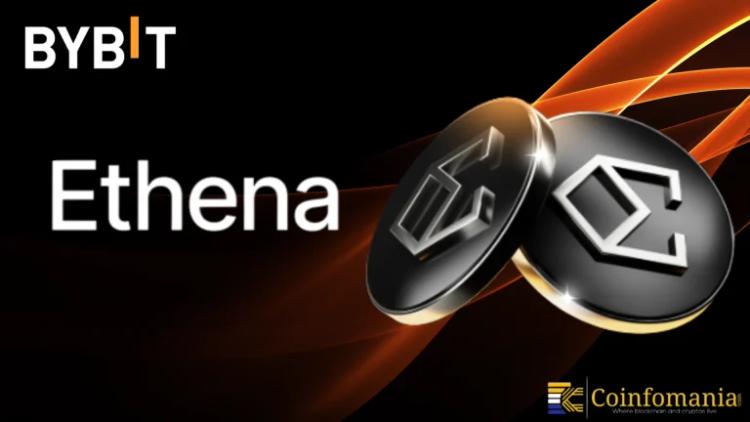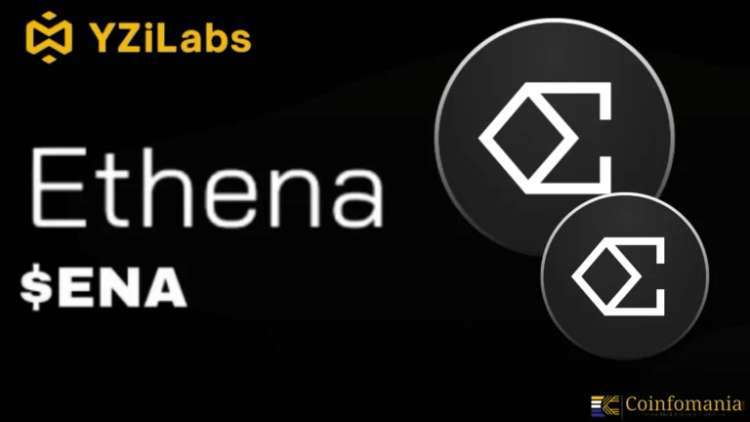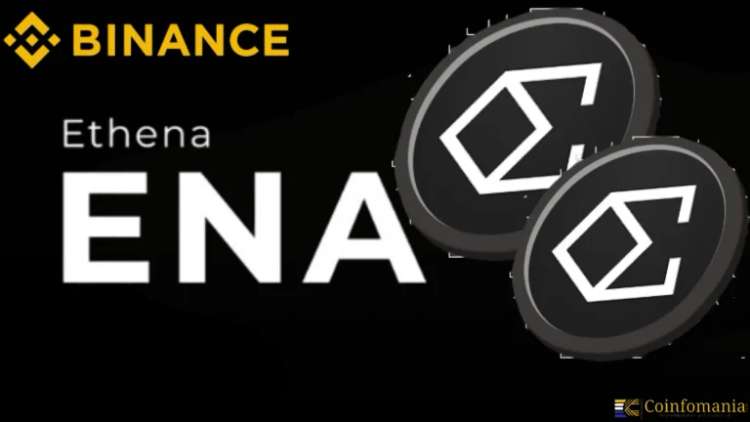ENA
As of December 19, 2025, Ethena (ENA) is trading at approximately 0.577 USD, reflecting a -3.14% decrease from the previous close.
| Current Price | 24h Price Change | 7-Day Avg Price | Support Level | Next Resistance |
| $0.577 USD | -3.14% | $0.619 USD | $0.202 USD | $21.18 USD |
📈 Technical Analysis Summary
- Price Movement: The -3.14% decrease indicates Bearish pressure; potential uncertainty or profit-taking.
- 7-Day Average Comparison: Trading below the 7-day average ($0.619 USD); weak or consolidating trend; watch for support breakdown.
- Support and Resistance Levels: Price is above support ($0.202 USD); confirms bullish base. Room for growth before hitting resistance ($21.18 USD).
- RSI Analysis: RSI at 69.35 indicates Neutral zone; balanced market.
- MACD Analysis: Positive MACD (+0.01); suggests bullish momentum.
📊 Market Sentiment
| Indicator | Value | Interpretation |
|---|---|---|
| RSI | 69.35% | Neutral; neither overbought nor oversold |
| MACD | +0.01 | Bullish; suggests upward momentum |
| Above 7-Day Avg? | No | Indicates bearish pressure or cooling off |
| Above Support? | Yes | Suggests price stability above support. |
Ethena Price Prediction Preview
| Forecast Range | Prediction Trend |
|---|---|
| Daily | 📈 Bullish — Bitcoin is expected to maintain upward momentum short-term |
| Weekly | 🔻 Weak — Risk of short-term pullback if support breaks |
| Monthly | 🚀 Bullish — ENAUSD could test $0.76 if momentum sustains |
| Yearly | 🧯 Uncertain — Macro factors may limit long-term upside for ENAUSD |
Related News

Ethena Linked Wallet Moves 25M ENA From Bybit in Fresh Transfer
A wallet linked to Ethena Labs made another large move on Tuesday. On-chain trackers show the address withdrew 25 million ENA tokens, worth about $6 million, from Bybit just a few hours ago. This is not a one-time move. It is part of a much larger pattern that has been building for weeks. Data from […]
Shweta Chakrawarty
Author

YZi Labs Sells $37.8M ENA While Maven 11 Capital Buys $21.3M
Shweta Chakrawarty
Author

Ethena Wallet Deposits 5M ENA ($3.27M) to Binance Today
Shweta Chakrawarty
Author

Ethena Price Surge: Bullish Momentum or Short-Term Hype?
Hanan Zuhry
Author

TLGY’s Bold ENA Token Bet Signals Major Shift in Crypto Investment Strategy Beyond Bitcoin
Triparna Baishnab
Author
Ethena is a digital currency running on Ethereum that works to develop a secure, free from censorship and scalable alternative to USD-backed stablecoins including USDT and USDC. The USDe is the heart of the protocol and is covered by a delta-neutral method instead of physical dollars. The platform uses both staked ETH and futures contracts to ensure stable prices and rewards are available, all while focusing on being decentralized. It is an important new development in the design of DeFi stablecoins.
How Does Ethena Work?
Delta neutral hedging allows Ethena’s synthetic stablecoin (USDe) to be pegged to the U.S. dollar.
- Collateral: Users deposit ETH or Liquid Staking Tokens (LSTs) like stETH.
- Hedging: The protocol takes equal short positions via perpetual futures to offset ETH's volatility.
- Yield Generation: USDe holders earn a composite yield from staking rewards and funding rates, known as the "Internet Bond."
This system ensures USDe maintains its peg while generating real, crypto-native yield.
Ethena vs. Other Cryptocurrencies
Feature | Ethena (USDe) | USDC/USDT | DAI (MakerDAO) |
Collateral Type | ETH + Derivatives | Fiat Reserves | Crypto (ETH, USDC) |
Peg Mechanism | Delta-Neutral Synthetic | Centralized Reserves | Overcollateralized |
Yield | Yes (Internet Bond) | No | Yes (DSR) |
Censorship Risk | Low | High | Medium |
Transparency | On-Chain | Off-Chain | On-Chain |
Ethena bridges TradFi hedging with DeFi collateral for a hybrid model that reduces systemic risk.
Technology Behind Ethena
- Delta-Neutral Strategy: Combines long ETH and short perpetuals.
- Liquid Staking Tokens: Accepts stETH and similar tokens to maximize yield.
- Automated Hedging Engine: Dynamically adjusts based on market conditions.
- Smart Contracts: Ethereum-based, with full transparency and auditability.
- Internet Bond: A yield product combining staking + funding rate returns.
This infrastructure enables scalable, transparent, and censorship-resistant stablecoin issuance.
Is Ethena a Good Investment?
As of May 2025, Ethena (ENA) trades at $0.3926, with a $2.28B market cap and $253.9M daily volume. The project has 67.5K holders and a TVL of $5.26B, reflecting strong on-chain activity.
Backed by Binance Labs and Dragonfly, Ethena’s “Internet Bond” delivers real yield to DeFi, positioning it as a key decentralized stablecoin amid growing regulatory scrutiny of centralized rivals.
Risks include reliance on centralized exchanges for shorting and competition from DAI and LUSD.
Price Outlook: ENA could hit $0.80 by late 2025 if momentum holds. Support levels are $0.35 and $0.30 on pullbacks.
With a $5.88B FDV, ENA is a high-risk, high-reward play in the evolving DeFi space.
Legal and Regulatory Considerations (2025)
Ethena operates in a regulatory gray zone:
- Synthetic Design: USDe isn't fiat-backed, complicating classification.
- Derivatives Exposure: May attract regulatory scrutiny over CEX hedging.
- Global Accessibility: Permissionless nature boosts adoption and oversight.
While not yet under direct regulatory attack, its algorithmic and derivatives-based model is under increasing scrutiny post-Luna.
How to Buy and Trade Ethena (ENA)
You can get Ethena (ENA) by signing up and trading on exchanges like Binance, Bybit, OKX and KuCoin. You can access ENA on decentralized exchanges based on Ethereum, including Uniswap and Balancer. You can generate or exchange USDe stablecoins directly from Ethena’s official site, using your ETH assets and wallets, including MetaMask and Rabby.
Popular Trading Pairs:
- ENA/USDT (Most liquid pair)
- ENA/ETH (Native Ethereum pairing)
- ENA/BTC (For BTC-denominated exposure)
USDe Minting & Yield Opportunities:
- Mint/Redeem USDe: Via ethena.fi using ETH, wETH, or stETH
- Stake USDe: Earn yield through Ethena’s Internet Bond mechanism
- Future Staking: ENA governance staking expected in upcoming protocol phases
Steps to Get Started:
- Understand the Asset
ENA is tied to Ethena’s synthetic dollar ecosystem (USDe), with future governance staking potential. Evaluate the project's real yield design, stablecoin dynamics, and backing assets (ETH, stETH). - Set Up Accounts & Wallets
- CEX: Binance, Bybit, KuCoin (complete KYC)
- DEX: Use MetaMask or Rabby wallet; trade on Uniswap or Balancer
- Identify Trading Opportunities
- Analyze Internet Bond yields, Ethena growth metrics, and protocol updates
- Watch DeFi narratives, stablecoin market share, and ETH liquid staking flows
- Choose Trade Direction
- Long: Bullish on decentralized stablecoins and Ethereum LSTs
- Short: Bearish on stETH depeg risk or DAI/USDT dominance
- Manage Risk
- Use stop-loss orders on CEXs
- Allocate 1-5% per trade; hedge via ETH or stables
- Monitor Your Trade
- Track ENA/USDe metrics, TVL growth, DAO proposals, and governance roadmap
Why Trade ENA?
Ethena blends DeFi-native stablecoins with on-chain yield generation. With USDe already live and ENA poised for governance utility, it offers a unique angle for stablecoin and LST-centric strategies in Ethereum's evolving DeFi stack.
Ethena Wallets and Security
Ethena supports all Ethereum-compatible wallets:
- Software Wallets: MetaMask, Rabby
- Hardware Wallets: Ledger, Trezor (via MetaMask)
USDe and ENA are ERC-20 tokens, making them easy to store, send, and manage in DeFi.
How to Secure Your Ethena Holdings?
- Use hardware wallets for long-term storage
- Avoid leaving assets on CEXs
- Revoke token approvals using Revoke.cash
- Monitor Ethena smart contract updates and announcements
Due to its collateral structure, users should also understand liquidation and depeg risks.
Ethena Adoption and Use Cases
- Stablecoin Replacement: DeFi platforms integrate USDe over USDC.
- Yield Aggregators: Used in Pendle, Gearbox, Morpho for composable strategies.
- Cross-chain Liquidity: LayerZero and Wormhole enable L2 and alt L1 adoption.
- DAO Collateral: Used in vaults and structured products.
Ethena is becoming a DeFi-native stablecoin with growing traction.
Ethena's Future Outlook & Growth Potential
- Decentralized Dollar Demand: Rising interest in censorship-resistant stablecoins.
- ETH Yield Stacking: Combining LST + funding yield places USDe at the DeFi core.
- Cross-Chain Growth: Expansion to L2s may mimic CRV or MKR’s role across DeFi.
Challenges remain, including CEX reliance and regulatory clarity, but the opportunity is massive.
Pros and Cons of Investing in Ethena
Pros:
- Decentralized, synthetic stablecoin design
- Real yield via Internet Bond
- Early traction and high TVL
- ENA token with governance utility
Cons:
- Experimental delta-neutral architecture
- CEX dependency for hedging
- Regulatory uncertainty
- Risk of depegging in volatile markets
Conclusion
Ethena represents a novel approach to stablecoin design—synthetic, decentralized, and yield-bearing. With USDe and ENA, it creates a new category of DeFi asset blending security and scalability. However, it is not without risks. Market conditions, platform execution, and regulatory developments will determine its long-term viability. High-risk, high-reward territory for sophisticated DeFi users.
Frequently Asked Questions
What makes USDe different from USDT or USDC?
USDe is synthetic and crypto-backed, not fiat-backed. It uses delta-neutral strategies to maintain its peg.
How does Ethena maintain its $1 peg?
Via delta-neutral positions: long ETH and short perpetuals to balance price movement.
What role do staked ETH and LSTs play?
They provide yield and collateral. Rewards come from both staking and derivatives.
Is Ethena’s yield sustainable?
Yields derive from real market incentives (not printed APY). Unlike Anchor, it's not subsidized.
What are the risks of holding USDe or ENA?
Depeg, smart contract failure, centralized exchange exposure, derivatives risks.
Does Ethena use centralized exchanges?
Yes, for executing short positions, which adds some custodial risk.
Can USDe be used across DeFi?
Yes, it's live on platforms like Curve, Pendle, and Morpho.
What does the ENA token do?
ENA is for governance and may later capture value from protocol revenues.
Is Ethena compliant with regulations?
It's operating in a legal gray zone. Future scrutiny is likely.
How does Ethena compare to DAI or sUSD?
It’s more capital-efficient than DAI and more stable than SNX-backed synths like sUSD.